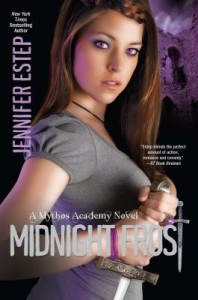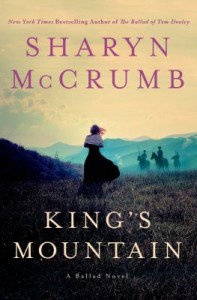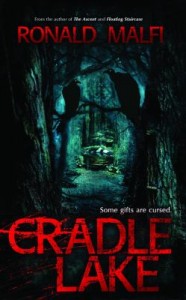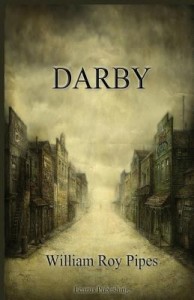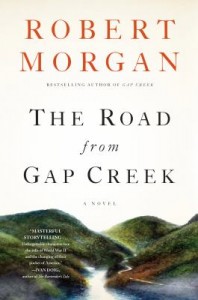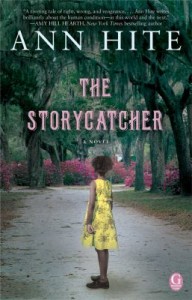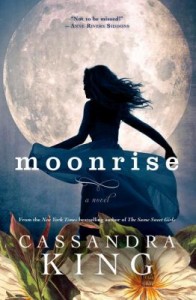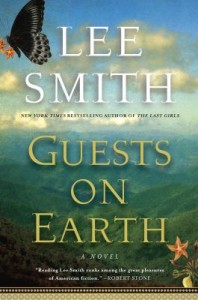 Evalina Toussaint is the narrator of many stories. From page one she insists her reminisces of Zelda Fitzgerald are the primary focus of this story. But Lee Smith’s Guests on Earth isn’t a novel about Zelda Fitzgerald. It’s a novel that Zelda Fitzgerald happens to appear in. As Evalina concedes, “Is any story not always the narrator’s story, in the end?” The infamous Zelda imbues Smith’s work of fiction with color and historical context, but she’s a glittering gem in Evalina’s kaleidoscopic world. A detached and detailed narrator, Evalina holds the kaleidoscope and watches all characters scatter and shift around her.
Evalina Toussaint is the narrator of many stories. From page one she insists her reminisces of Zelda Fitzgerald are the primary focus of this story. But Lee Smith’s Guests on Earth isn’t a novel about Zelda Fitzgerald. It’s a novel that Zelda Fitzgerald happens to appear in. As Evalina concedes, “Is any story not always the narrator’s story, in the end?” The infamous Zelda imbues Smith’s work of fiction with color and historical context, but she’s a glittering gem in Evalina’s kaleidoscopic world. A detached and detailed narrator, Evalina holds the kaleidoscope and watches all characters scatter and shift around her.
Evalina was born the daughter of an exotic dancer named Louise. She is devoted to her mother. They live in the French Quarter in New Orleans. Louise gains the affections of a Mr. Arthur Graves, a wealthy cotton broker, who dotes on her and Evalina. When Louise becomes pregnant, Mr. Graves furnishes a house outside of the Quarter, in a more respectable suburb. But the relationship sours after a sickly baby arrives and quickly dies. Distraught, Louise commits suicide. The repentant Mr. Graves takes the now orphaned Evalina into his home, Bellefleur, with predictably bad results. After her short-lived stint at Bellefleur, Evalina is shipped off to Highland Hospital in Asheville, partially because she refuses to eat and partially, as the novel suggests, at the urging of Mr. Graves’ wife.
Despite being uprooted again, Evalina acclimates without much trouble. The head doctor’s wife, Grace Potter Carroll, befriends Evalina. Mrs. Carroll heard word of Evalina’s unpolished musical talent before her arrival and offers Evalina piano lessons. Dr. Carroll believes that patients benefit from structure, good nutrition, and plenty of exercise. He orchestrates a schedule of constant activity for the Highland residents. Between the art classes and the hikes and the patient-staged theatricals, Highland feels like an extended summer camp to watch after the mentally ill.
Zelda is one of the many patients traipsing around Highland, but Smith renders her with a radiant energy, distinct from the rest. Evalina learns Zelda’s fickle nature straight away, how she can be friendly one instant and then cruel the next. After their art class, Zelda invites Evalina to make paper dolls and then rips them to shreds. Evalina observes how Zelda never looks the same twice and she notes that Zelda’s face was always shifting. Appropriately, Zelda plays Mary, Mary, Quite Contrary during a ballet at the hospital – one of her many productions at Highland.
Eventually, after some time there, Evalina, like many of the characters, moves on from Highland. She is accepted into the Peabody Institute to study music. Even though Evalina demonstrates immense talent, she prefers to play as an accompanist rather than a soloist. After several years in the real world, Evalina suffers another breakdown that sends her straight back to Highland. Things have changed. New doctors preside over the hospital with different philosophies. None of the old patients remain. Zelda is gone (but not for long).
Yet Highland still feels like home to Evalina. The security of its structure gives Evalina comfort since her childhood was spent in an unconventional environment, due to her mother’s employment. And her mother’s suicide shattered and displaced Evalina during her formative years. Evalina observes that the distinction between mentally sound and mentally unsound is tenuous at best; a line that she and other patients play jump rope with. While Evalina collects stories from the new and incoming residents, she is reticent to share own with others. Smith, in fact, provides many of patients’ stories secondhand, but does not cover much of the ugly reality in them firsthand. As one of the doctors discusses with Evalina, patients only stay at Highland for a brief moment, an excerpt from their entire life. With such a limited glimpse of a person, it is difficult to put a whole life in context. Lee Smith’s Guests on Earth portrays fabricated glimpses of a flamboyant historical figure, infused by the perspective and life story of a fictional and fascinating narrator.
Guests on Earth was the winner of the 2014 Sir Walter Raleigh Award for Fiction.
Check this title’s availability in the UNC-Chapel Hill Library catalog.

